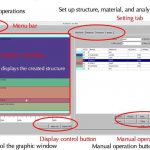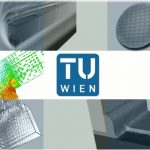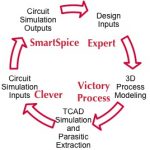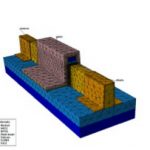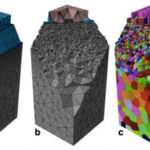Silvaco has undergone one of the most impressive EDA transformations so it was a pleasure to interview the man behind it. David Dutton’s 30+ year career started at Intel, Maxim, and Mattson Technology where he led the company’s turnaround and finished as President, CEO, and board member. David joined Silvaco as CEO… Read More
Tag: tcad
TCAD Simulation of Organic Optoelectronic Devices
In my office there are plenty of LED displays for me to look at throughout the day: three 24″ displays from Viewsonic, a 15″ display from Apple, an iPad, a Samsung Galaxy Note 4, a Nexus tablet, a Garmin 520 bike computer, and a temperature display. LED and OLED displays are ubiquitous in all sorts of consumer electronics,… Read More
Silicon Photonics – Back to the Future – Part Deux?
I cut my teeth in silicon IC design at Texas Instruments during the early 1980’s working on what would eventually become the ASIC and Fabless IC industries that enabled the explosive growth of the electronics industry over the last three decades. Of late I’ve become involved in the silicon photonics space and I am getting an incredible… Read More
Academia and TCAD Grow Closer
On my first trip to Austria for EDA business I traveled by car from Germany, and I couldn’t wait to see how fast we would travel on the fabled Autobahn. Oddly enough it was summertime and the Autobahn was filled with vacationing families driving cars with shiny, aluminum campers in tow, so our car only traveled about 60 mph, nothing… Read More
SEMATECH, Silvaco and SRAM
SEMATECH has been around for over 20 years, starting in Austin. Today it is in upstate New York which increasingly seems to be the area for semiconductor research with IBM (still doing research although they sold their semiconductor business to GlobalFoundries), GlobalFoundries’ own Fab 8, the College of Nanoscale Science… Read More
Silvaco 30 Years Ago
It’s Silvaco’s 30 year anniversary. You may already know the dry official story of the early days:
- Founded in 1984 by Dr Ivan Pesic
- In 1984 the initial product, Utmost, quickly became the industry standard for parameter extraction, device characterization and modeling.
- In 1985 Silvaco entered the SPICE circuit
Coventor SEMulator3D, Now With Added Dopant, Diffusion, Illumination and More
Coventor just rolled out the latest version of SEMulator3D, their virtual fabrication tool. Very conveniently it is SEMICON West this week and they have a booth. I dropped by and got a demo from David Fried, Coventor’s CTO about all the new stuff. He’s very proud of SEMulator3D’s new logo but mostly he is proud… Read More
SEMulator3D on Silicon Cloud International
Almost exactly a year ago I wrote about Silicon Cloud International (SCI). Their mission is to help smaller countries that have targeted semiconductor design as a way to move up the technology ladder from low-cost manufacturing. Last year everything was in the future but SCI now have their first two centers up and running. The first,… Read More
The Transistor is the Foundation of TCAD to Signoff
At the most basic level, semiconductor design is all about transistors. Any report on a large microprocessor or mobile application processor is in awe about how many transistors it contains. Moore’s Law is all about the most economic way to manufacture transistors. Each process generation for the last decade and looking ahead… Read More
High-Voltage Power Design
Most of what is talked about on SemiWiki is silicon design. After all for regular SoCs it is the only game in town. But for high voltage power applications (think automotive for one big market) there are other more esoteric technologies becoming more attractive.
Silicon has been the material of choice for high-voltage power applications… Read More



